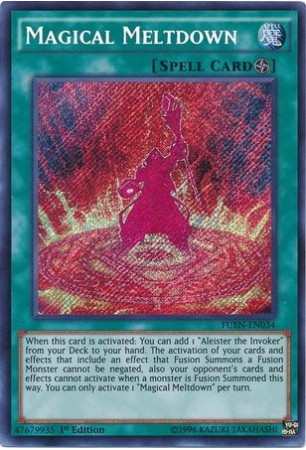
#Magical meltdown vs d barrier series#
The Tomb Raider series uses these a lot, both to define the outer edges of outdoor levels (unclimbable cliffs) and occasionally to prevent backtracking (slides down really steep slopes).Metroid Fusion puts a twist on the water variant by making it horizontal as well: until you get the Gravity Suit, you can't use the Sprint Shoes you'll need to escape a flooded area late in the game.New players who aren't familiar with wall jumping will find plenty of unreachable ledges, often coupled with deep water that kills your mobility upgrades.

The 2D games have their gravity barriers as well, but years of Sequence Breaking have rendered them nearly meaningless.Of course, this is absent in the 2D games, where the Wall Jump and the infinite Space Jump allow Samus to leap over any vertical obstacle. There was some subtle manipulation as well, in Metroid Prime 2: Echoes and Metroid Prime 3: Corruption, where attempting to cross a boundary chasm using the Screw Attack would suddenly eliminate the technique's momentum and drop Samus like a stone. The Metroid Prime 3D games used this extensively: either there was an impassable ridge looming high above, insurmountable even by Samus' legendary jumping skills, or a precipice.In inFAMOUS, in which the protagonist accidentally electrocutes himself in water more than a couple of inches deep.

The player knows they've both made forward progress and cannot retreat, because they crossed a gravity barrier.īut if a clever player finds a way to get down the cliff without dying, Sequence Breaking may ensue. For example, a character may leap off a small cliff and fall into a new region, and the cliff behind them is unclimbable. The gravity barrier may also be used to allow a player to move forward, but then restrict their backtracking. Gravity barriers can sometimes be temporary obstacles, until a character comes back with a power-up that provides Video Game Flight. Either they will drown if they try to cross it, or some form of Border Patrol (usually carnivorous fish) will stop them from swimming too far out, or the water will continue forever and they will eventually get bored and give up. A really bad game design will use the Invisible Wall to prevent a character from progressing further.Īnother version of this trope is the water barrier, where a player cannot proceed because a large body of water blocks their progress. A poor game design will use the insurmountable waist height fence - the obstacle that obviously restricts progress but that anyone could just climb over, given the steely determination of a video game hero. The best video-game map-makers can use gravity barriers to restrict player movement, in a way that's not blatant manipulation. especially when said ranges completely surround the map like a giant crater. On the other hand, as graphics have improved, "mountain ranges" that are ridiculously steep yet not much higher than a three-story building randomly jutting out of the mostly-flat grasslands have come to look less like a plausible terrain feature and more like an Acceptable Break from Reality. Sure, the real world has lots of sheer drops or rocky cliff-sides that might be nigh-impassible to the untrained outdoorsman. Gravity barriers have the potential advantage of looking realistic without being out of place. A gravity barrier is either a cliff or slope that's too tall to climb. Outdoors, however, there's only so many fences a game-developer can put up before every forest looks like some kind of park. A developer can easily limit an indoor environment - buildings have walls. but they still aren't as big as all outdoors.

As video games become more sophisticated, their environments become bigger and more realistic.


 0 kommentar(er)
0 kommentar(er)
